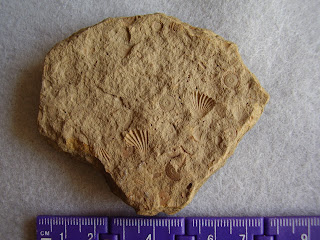Skull effigy pebble, Licking County, Ohio, find by Ken Johnston
This "skull effigy pebble" was found in lithic debris at a suspected Archaic to Paleolithic period cultural site along the shore of modern Buckeye Lake, Ohio. The find site is visible from interstate highway 70 (I-70). The pebble is 1cm in size. It appeared to have been manuported to the site with other foreign stone material which was found in a concentration feature, such as a possible former dwelling floor, eroding from a rise in a plowed field. It was the only white colored stone of its kind found in the area. Its skull-like shape led to closer examination and I then noticed a possible face image which looks to have been humanly modified on a micro scale. The mouth is as if a little circle to depict, or in recognition of, a "moan." It may be part of the stone was naturally suggestive and a person in prehistory recognized its potential and "finished it off" by making a couple of modifications.
A find like this emphasizes the need for preservation and very close examination of all stone material- even tiny coarse stone pebbles such as this- found in archaeological sites. The micro-lithic Acheulean handaxes of Homo erectus at Bilzingsleben (see John Feliks, Phi in the Acheulian) reminds one of the possible intricate attention on a micro scale given to stone materials by artists of the past. These micro worked artifacts are too often missed and forsaken by archaeologists and collectors.
John Feliks link
-kbj







































